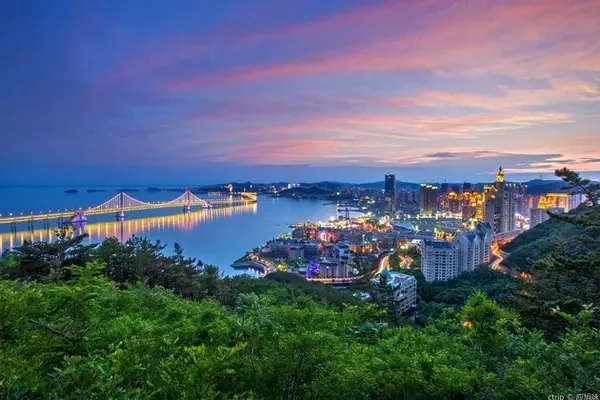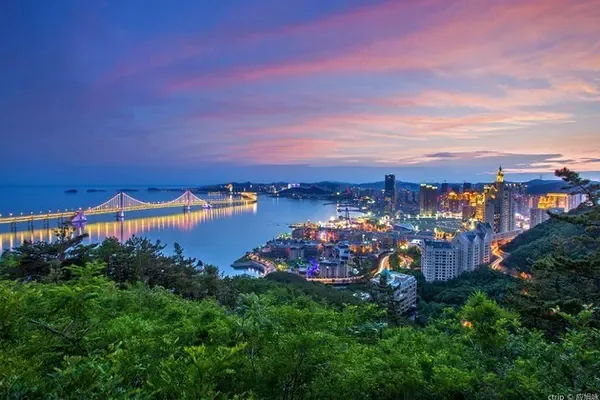In the past two years, I have done several domestic long-distance self-drives, but I have not systematically recorded and organized them.
This time, I want to list the self-driving tours in northern Xinjiang that I traveled in June 2018.
This time, there are three people in one car, departing from Shanghai, arriving in Urumqi by train, renting a car and driving by yourself, the model is LaVida.
The itinerary is 34 days in total, and the car rental is 28 days. The per capita cost: car rental fee is 1215.33 yuan, refueling along the way is 1103.57 yuan, toll fee is 385 yuan, accommodation fee is 1887.5 yuan, and the entrance fee is not much about 300 yuan (some are free with the photographer's card) 1300 yuan, a total of 6191.4 yuan (excluding meals). The whole itinerary was relatively smooth, and basically achieved the purpose of taking the ancient Silk Road in the Western Regions, and gained a lot.
The lesson that must be learned is: when picking up the car, I didn’t check the vehicle’s driving license, which resulted in two violations issued by the police along the way due to the expired driving license. Although the car rental company bears the consequences, the series of processing procedures caused a lot of trouble and took a lot of energy .
Friends who rent cars are reminded to remember to review the vehicle driving license!
1. News from the carriage
Depart by train, Z40 times, Shanghai - Urumqi. The lower berth is 680.5 yuan, and tickets for the lower berth are automatically issued for people over the age of 60 when purchasing tickets online.
It was the first time I took a long-distance train, and the condition of the train was much better than expected. The beds were newly replaced, clean and orderly. The bathroom has long hot water supply, and the toilet has no peculiar smell. The flight attendants are dedicated to their work, clean up diligently, and provide standardized services. The entire carriage was full of people, there was no sense of noise, and it seemed very quiet.
I am very able to adapt to this kind of travel environment, I can eat and sleep well, and I specially downloaded a few TV series on Aipai. It is a rare opportunity to follow the series like this.
leave a picture before departure
tidy compartment
At the window of the train going west, make a beautiful reverie for the upcoming self-driving in southern Xinjiang.
2. Arrive in Urumqi
Arrive at Urumqi South Railway Station at 10:30 in the morning and drive for a total of 39 hours. On the day of arrival, the weather dropped sharply and the sand and dust were long. After checking in, go to the car rental point to pick up the car and have lunch by the way. After using the train for two consecutive days, the travelers couldn't wait to improve. They ordered a large plate of chicken and were told to use a large portion (60 yuan for a small portion, 100 yuan for a large portion). I specially sent a large take-out box, and brought it back to the hotel to continue to eat at night, but I couldn’t finish it. After picking up the car, the first task was to go to the supermarket for shopping.
3. Urumqi - Shanshan
Originally, the itinerary for the first day was very easy, but unexpectedly, we started at 9:00 am and did not rest until 11:00 pm. Departure from Urumqi, via Turpan Brake, visit the ancient city of Gaochang, visit the Bezeklik Thousand Buddha Caves, enjoy the Kumtag Desert, and stay in Shanshan. The content is very rich, and the experience along the way is too exciting. The intoxicating part is the communication with the hospitable Uighur family in Brake Village. It's true that the grapes in Turpan are not yet ripe, and we have been melted by the enthusiasm of the Uighur sisters.
In many cases, the excitement of the journey is not really in the five-star scenic spot, but in the moment when you meet the soul.
The grapes in Turpan are not yet ripe
Old Man of Black Village
Entering a Uyghur family, the hospitable host specially cut watermelon.
Grandma is a well-informed village cadre who speaks Chinese very well.
Grandma's daughter-in-law and two granddaughters
4. Bezeklik Thousand Buddha Caves
Between the mountains of the Flame Mountain Scenic Area in Turpan, there is a road that has not been open to traffic for a long time. The end of this road is the Mumugou Canyon behind the Flame Mountain. The grottoes from the Southern and Northern Dynasties to the Sui, Tang, Yuan and Ming dynasties are earlier than the Mogao Grottoes in Dunhuang.
On the way to the Thousand Buddha Caves
Due to the lack of effective protection of the Thousand Buddha Caves for a long time, especially after the introduction of Muslims, the Buddhist caves gradually weakened. Fortunately, after liberation, they were valued and included in the national cultural relics list in 1982. These precious caves finally has been effectively protected.
Tickets for visiting the Thousand Buddha Caves are 40 yuan, and there is no discount for more than 60 yuan. Photography is not allowed inside the cave.
5. Kumtag Desert
The second time I came to Turpan, this time I chose to stay in Shanshan, just to see the Kumtag Desert. This desert is famous for its zero-distance contact with the city. We deliberately took a desert surf vehicle to the commanding heights to enjoy the sandy scenery like a cream cake. Played until dark before leaving. Tickets for scenic spots are 40 yuan, half tickets for those over 65 years old, 30 yuan for scenic spots, and 150 yuan for surf cars. Ticket sales stop at 8:00 p.m., and clearance begins after 9:00 p.m.
6. Maqam Inheritance Center
When I came to Hami for the first time, I encountered a closed museum when I came here. The exterior building is very distinctive. This time I came here by car.
Cars can be driven in, and there is a spacious parking space. Of course, everyone in the car must go through the security check when entering.
Entering the hall, on the left is an exhibition hall about Muqam. Muqam is an art culture handed down from the ancient Western Regions. It has rich forms of expression and expresses different contents through music, dance and narrative poetry.
When we went, it was just in time for a performance, and it was basically a group of spectators, and the venue was full. The performance was not long, and after coming out, I went to visit the "Uyghur Embroidery Hall" on the right. It was very exquisite and had been applied for national intangible cultural heritage. The hand-embroidered patterns of the exhibits inside were really beautiful.
7. Hami Museum
The Hami Museum and the Muqam Heritage Center occupy an area, and the architectural appearance has regional characteristics and aesthetics. It is free to enter and visit, and there is a security check at the door. The scale of the museum exhibition room is not very large, but the content is very rich, and the display types are also very novel. The most innovative thing is the arrangement of stones. It really looks more and more like it. It is so fresh that I can't help but take pictures of them one by one. Next, offer a real delicacy on WeChat.
8. Crossing Lop Nur (Hami - Milan Town)
646 kilometers, 18 hours, setting a record for the highest single driving time in the history of self-driving. Such "crazy" is all about crossing Lop Nur.
Depart from Hami at 8:30 in the morning and stay in Milan Town at 2:30 in the middle of the night. Lop Nur was lifted from the mysterious veil by the wheels.
The high temperature along the way is unbearable, desolate, the landform is dry, and the traces of crustal movement appear. Driving in it is like a boat in the ocean. It took about 8 hours of hard work along the way, and the security checks were strict, especially at the Lop Nur outpost, including mobile phone pictures.
The topic discussed along the way was also the tragic journey of Yu Chunshun, a Shanghai man who died in Lop Nur. Today, the road across Lop Nur has been completed. Although the road conditions are extremely poor, it is not a fantasy after all.
PS: After entering the Lop Nur area, the road is deserted and uninhabited. If you don’t stay after arriving at Lop Nur Town, the road behind is very difficult, so you must control the time and don’t be too greedy to stop and shoot. There are accommodations and gas stations in Lop Nur Town.
9. Ruins of Milan
After walking out of Lop Nur, I arrived at Milan Town at 3 a.m. and found a hotel to stay in. In fact, Milan Town is the location of the 36th Regiment of the Second Division of the Xinjiang Production and Construction Corps. When I left the next day, I knew there was a Milan ruins here, so I looked for it.
The Milan site is an important farming and Buddhist site during the Han and Tang Dynasties. It is said that there are remains of ancient cities, Buddhist temples, pagodas, beacon towers and ancient irrigation channels in the site. We found it with great difficulty, but saw that a long piece of loess in front of us was surrounded and could not enter.
Asking about the surrounding people, the answer is that the scenic spot is being developed and tourists are not currently accepted. We had to peek in along a nearby path, and saw nothing but a watchtower. I don't know what scale and level of scenic spots will be developed into in the future.
Photo/Text Autumn Fun
on August 2, 2018



![[Spring Travel Notes] At the turn of spring and summer, come to Turpan for a historical and cultural baptism, and feel the enthusiasm of the desert~](https://www.anyonetrip.com/uploads/202302/04/bb4b015fbf52abf0.webp)